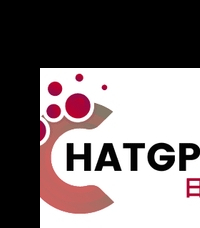Global Superconductors Market Poised for Rapid Growth, Driven by Technological Advancements and Rising Demand in Energy and Healthcare Sectors
October 1, 2025 – New York, NY – The global superconductors market is witnessing accelerated growth, fueled by breakthroughs in cryogenics, increasing demand for energy-efficient technologies, and expanding applications in medical imaging, quantum computing, and transportation. According to recent market analysis, the superconductors market is projected to reach USD 18.5 billion by 2030, growing at a CAGR of 9.2% from 2025 to 2030.
Superconductors—materials that conduct electricity without resistance when cooled to critical temperatures—are transforming industries due to their potential to significantly reduce energy losses and enable powerful magnetic applications.
Key Market Drivers:
• Healthcare Expansion: Increased adoption of MRI systems and advancements in medical diagnostics are driving demand for superconducting magnets.
• Energy Efficiency Initiatives: Governments and private entities are investing in smart grids and superconducting cables to reduce transmission losses.
• Quantum Leap in Computing: The rise of quantum computing is fostering investments in low-temperature superconducting materials.
• Maglev Transportation: Emerging economies are exploring magnetic levitation (maglev) transportation, further boosting market prospects.
Market Segmentation Highlights:
• By Type: Low-temperature superconductors (LTS) dominate the market, but high-temperature superconductors (HTS) are expected to witness the fastest growth.
• By Application: Energy, healthcare, electronics, and transportation are the leading sectors driving adoption.
• By Region: Asia-Pacific holds the largest market share, led by China, Japan, and South Korea. North America and Europe continue to be strong markets due to heavy R&D investments.
Key Players in the market include American Superconductor Corporation, Sumitomo Electric Industries Ltd., Bruker Corporation, Fujikura Ltd., and Superconductor Technologies Inc., among others. These companies are focused on R&D, partnerships, and strategic expansions to gain a competitive edge.
Future Outlook:
With ongoing research into room-temperature superconductors and growing emphasis on clean energy solutions, the market is set to evolve rapidly over the next decade. Strategic collaborations between academia, government bodies, and private enterprises are expected to unlock new frontiers in superconducting technologies.
October 1, 2025 – New York, NY – The global superconductors market is witnessing accelerated growth, fueled by breakthroughs in cryogenics, increasing demand for energy-efficient technologies, and expanding applications in medical imaging, quantum computing, and transportation. According to recent market analysis, the superconductors market is projected to reach USD 18.5 billion by 2030, growing at a CAGR of 9.2% from 2025 to 2030.
Superconductors—materials that conduct electricity without resistance when cooled to critical temperatures—are transforming industries due to their potential to significantly reduce energy losses and enable powerful magnetic applications.
Key Market Drivers:
• Healthcare Expansion: Increased adoption of MRI systems and advancements in medical diagnostics are driving demand for superconducting magnets.
• Energy Efficiency Initiatives: Governments and private entities are investing in smart grids and superconducting cables to reduce transmission losses.
• Quantum Leap in Computing: The rise of quantum computing is fostering investments in low-temperature superconducting materials.
• Maglev Transportation: Emerging economies are exploring magnetic levitation (maglev) transportation, further boosting market prospects.
Market Segmentation Highlights:
• By Type: Low-temperature superconductors (LTS) dominate the market, but high-temperature superconductors (HTS) are expected to witness the fastest growth.
• By Application: Energy, healthcare, electronics, and transportation are the leading sectors driving adoption.
• By Region: Asia-Pacific holds the largest market share, led by China, Japan, and South Korea. North America and Europe continue to be strong markets due to heavy R&D investments.
Key Players in the market include American Superconductor Corporation, Sumitomo Electric Industries Ltd., Bruker Corporation, Fujikura Ltd., and Superconductor Technologies Inc., among others. These companies are focused on R&D, partnerships, and strategic expansions to gain a competitive edge.
Future Outlook:
With ongoing research into room-temperature superconductors and growing emphasis on clean energy solutions, the market is set to evolve rapidly over the next decade. Strategic collaborations between academia, government bodies, and private enterprises are expected to unlock new frontiers in superconducting technologies.
Global Superconductors Market Poised for Rapid Growth, Driven by Technological Advancements and Rising Demand in Energy and Healthcare Sectors
October 1, 2025 – New York, NY – The global superconductors market is witnessing accelerated growth, fueled by breakthroughs in cryogenics, increasing demand for energy-efficient technologies, and expanding applications in medical imaging, quantum computing, and transportation. According to recent market analysis, the superconductors market is projected to reach USD 18.5 billion by 2030, growing at a CAGR of 9.2% from 2025 to 2030.
Superconductors—materials that conduct electricity without resistance when cooled to critical temperatures—are transforming industries due to their potential to significantly reduce energy losses and enable powerful magnetic applications.
Key Market Drivers:
• Healthcare Expansion: Increased adoption of MRI systems and advancements in medical diagnostics are driving demand for superconducting magnets.
• Energy Efficiency Initiatives: Governments and private entities are investing in smart grids and superconducting cables to reduce transmission losses.
• Quantum Leap in Computing: The rise of quantum computing is fostering investments in low-temperature superconducting materials.
• Maglev Transportation: Emerging economies are exploring magnetic levitation (maglev) transportation, further boosting market prospects.
Market Segmentation Highlights:
• By Type: Low-temperature superconductors (LTS) dominate the market, but high-temperature superconductors (HTS) are expected to witness the fastest growth.
• By Application: Energy, healthcare, electronics, and transportation are the leading sectors driving adoption.
• By Region: Asia-Pacific holds the largest market share, led by China, Japan, and South Korea. North America and Europe continue to be strong markets due to heavy R&D investments.
Key Players in the market include American Superconductor Corporation, Sumitomo Electric Industries Ltd., Bruker Corporation, Fujikura Ltd., and Superconductor Technologies Inc., among others. These companies are focused on R&D, partnerships, and strategic expansions to gain a competitive edge.
Future Outlook:
With ongoing research into room-temperature superconductors and growing emphasis on clean energy solutions, the market is set to evolve rapidly over the next decade. Strategic collaborations between academia, government bodies, and private enterprises are expected to unlock new frontiers in superconducting technologies.
0 Комментарии
0 Поделились





